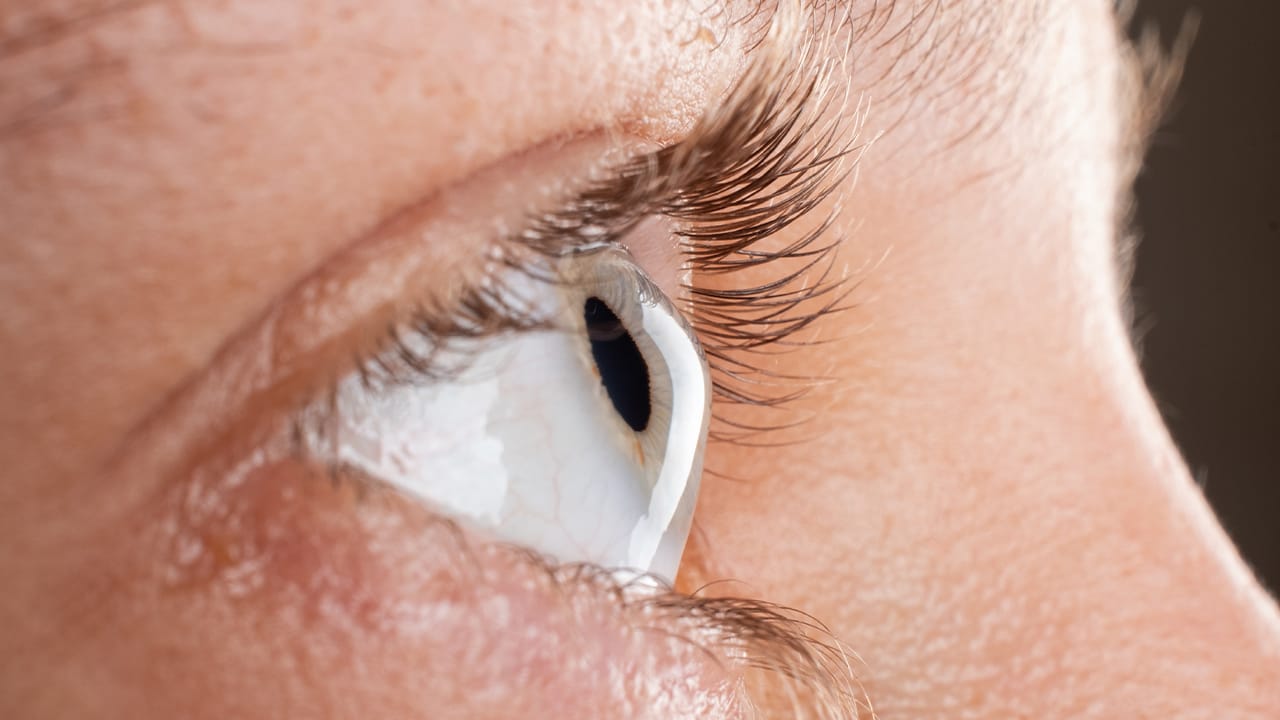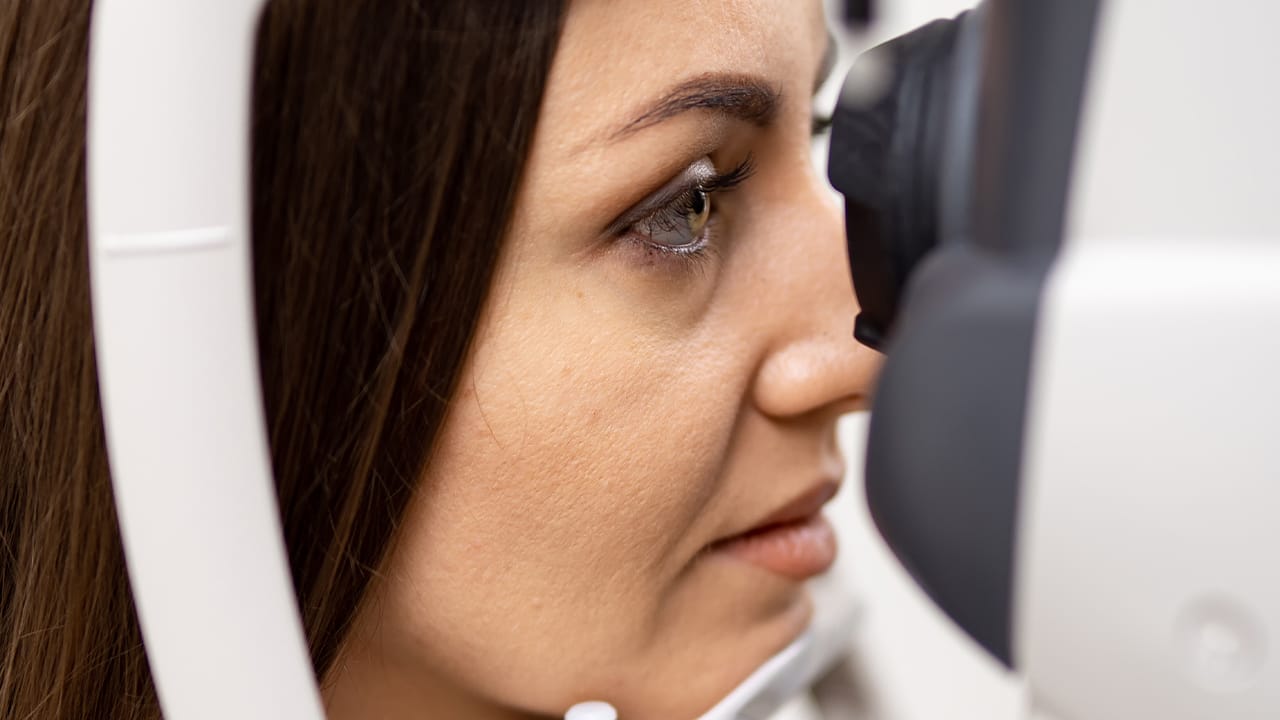Keratoconus is a progressive eye disease that affects the structure of the cornea, causing it to thin and point forward. This disease usually starts at a young age and leads to visual impairment complaints over time.
Although the exact cause of keratoconus is not known, genetic predisposition and environmental factors are thought to be effective in the early stages of the disease. Symptoms of the disease include patients experiencing visual impairment and not being able to see clearly despite using glasses or contact lenses.
Diagnosis is made by performing detailed eye examinations. Keratoconus treatment varies depending on the progression of the disease. While soft contact lenses and rigid gas permeable contact lenses can be used in the early stages, treatment methods such as corneal cross-linking (CXL), ring placement and corneal transplantation can be applied in advanced stages.
Things that patients should pay attention to after keratoconus surgery include paying attention to eye hygiene, not neglecting doctor check-ups and avoiding factors that may irritate the eyes.
İçindekiler
Toggle
What is Keratoconus?
Keratoconus is a disease that manifests itself with a change in the shape of the eye as a result of the deterioration in the structure of the cornea. Normally, the cornea is the transparent layer at the front of the eye and allows the eye light to focus clearly. However, in keratoconus, the cornea gradually thins and begins to take on a conical shape. This causes the light not to focus correctly in the eye, causing vision disorders.
As a result of the cornea protruding forward, vision loss can progress and if left untreated, serious vision problems can occur. The disease usually starts at a young age and progresses over time. While vision can be corrected with glasses or contact lenses in the early stages, surgical intervention may be required in later stages.
Keratoconus Causes
Although the exact cause of keratoconus is not yet fully understood, it is known that certain factors pave the way for the development of this disease. These causes can generally be due to genetic and environmental factors. The main known causes of keratoconus are listed below:
Genetic Predisposition:
Keratoconus is more common in people with a family history. If a person has a family member with keratoconus, they are at higher risk of developing the disease.
Genetic mutations are an important factor in the development of keratoconus.
Allergic Reactions:
Allergic diseases and scratching habits can contribute to the progression of keratoconus. Constantly rubbing the eyes as a result of allergic reactions can damage the tissues in the cornea and lead to the development of the disease.
Rubbing the Eyes:
Excessive rubbing of the eyes is one of the most important environmental factors that can cause the development of keratoconus. Constant and intense eye rubbing can damage the corneal structure and cause deformities.
Genetic Disorders:
Keratoconus is more common with some genetic diseases. Genetic diseases such as Down syndrome and Marfan syndrome in particular can increase the development of keratoconus.
Oxidative Stress:
Oxidative stress, which occurs as a result of excessive accumulation of free radicals in the body, can cause keratoconus to progress. This leads to chemical changes that damage the structure of the cornea.
Other Health Problems:
Asthma, eczema and other immune system disorders can also be risk factors for the development of keratoconus. These diseases, combined with genetic predisposition, can contribute to the emergence of keratoconus.
Keratoconus Symptoms
The symptoms of keratoconus may vary depending on the stage of the disease and individual differences. In the early stages, the symptoms are usually mild, but if left untreated, they become more pronounced in the later stages. Some of the most common symptoms of keratoconus are listed below:
Blurred Vision:
Most patients complain of blurred vision, especially at long distances. This is due to the fact that light cannot focus properly in the eye due to the deformity of the cornea.
Night Vision Difficulties:
In keratoconus, vision difficulties may be experienced at night or in low light. Extreme sensitivity to light and the appearance of light rings are common complaints of patients.
Stinging Sensation and Irritation in the Eye:
Irritation such as stinging, itching and redness in the eyes are frequently observed. These symptoms may become more pronounced in the later stages of the disease.
Frequent Need for Glasses or Lens Changes:
As vision impairment increases, patients may feel the need to change their glasses or contact lens prescription frequently. While glasses or soft contact lenses may be sufficient in the early stages, it may be necessary to switch to rigid gas permeable lenses in the advanced stages.
Sensitivity to Light (Photophobia):
Patients may have increased sensitivity to light. This condition causes discomfort in the eyes, especially under bright lights.
Change in Refractive Power:
Patients may experience frequent prescription changes, especially if their visual acuity changes. The deformity in the cornea affects the refractive power in the eye.
Double Vision (Diplopia):
In the advanced stages, some patients may also experience complaints of double vision (diplopia) due to the deformity in the cornea. This condition is caused by focusing problems in the eye.
Corneal Tissue Thinning and Deformity:
In the advanced stages of keratoconus, the cornea gradually thins and begins to take on a conical shape. These changes further deteriorate the quality of vision in the eye.
Vision Loss:
If left untreated, severe vision loss can occur in the later stages of the disease. This can cause vision to gradually decrease and seriously affect quality of life.
How is the disease diagnosed?
Keratoconus can be diagnosed with a detailed eye examination and various tests performed by an ophthalmologist. Early diagnosis is extremely important for treating the disease before it progresses. The diagnostic process consists of the following stages:
Eye Examination:
In the first stage, the ophthalmologist performs a basic eye examination to evaluate the patient’s vision level and eye health. Visual acuity is tested and the next steps are taken considering the patient’s complaints.
Corneal Topography:
Corneal topography is one of the most effective tests in the diagnosis of keratoconus. This test is performed with a device that shows irregularities and deformities on the surface of the cornea like a map. The topographic map clearly reveals changes in the shape of the cornea.
Spectrophotometry (Corneal Thickness Measurement):
In keratoconus, the central part of the cornea becomes thinner. Measurements made with a spectrophotometry device determine the thickness of the cornea and these examinations can provide important data even in the early stages of the disease.
Pachymetry Test:
Pachymetry is a test that measures the thickness of the cornea. In patients with keratoconus, the average thickness of the cornea decreases. This test provides information about the stage of the disease by directly measuring the thickness of the cornea.
Ophthalmology Tests:
The eye doctor can eliminate possibilities other than keratoconus by performing standard tests for eye pressure, retinal health and other eye diseases.
Fixed Lens or Rigid Lens Application:
Sometimes patients’ visual impairment can be made clearer with rigid gas permeable lenses. This can be done to evaluate how the disease will respond to treatment.
After the diagnosis of keratoconus is confirmed with these methods, the treatment process is started.
Keratoconus Treatment
Keratoconus treatment varies depending on the stage and severity of the disease. In the early stages, treatment can usually be done with glasses or soft contact lenses, while in the advanced stages, more advanced treatment methods can be used. The main methods used in the treatment of keratoconus are as follows:
Use of Glasses and Contact Lenses:
In the early stages, glasses or soft contact lenses may be recommended for keratoconus patients. However, as the disease progresses, these lenses may not be sufficient and patients may be directed to rigid gas permeable contact lenses.
Rigid Gas Permeable Contact Lenses:
Rigid gas permeable contact lenses are special lenses that correct corneal deformities and improve vision quality. These lenses are an effective treatment option for patients with visual impairment.
Corneal Cross-Linking (CXL):
This method is a treatment option aimed at stopping the progression of keratoconus. It prevents the cornea from thinning by strengthening the bonds in the cornea. This procedure, which uses ultraviolet light and riboflavin, does not cure keratoconus but can stop its progression.
Corneal Implants (Intacs):
In advanced stages, the shape of the cornea may not be correctable. In this case, micro implants are placed in the cornea to try to correct the deformity in the eye.
Corneal Transplant (Keratoplasty):
If keratoconus is advanced and has not responded to other treatment methods, corneal transplant (keratoplasty) can be applied as a last resort. This procedure is performed by replacing the patient’s cornea with healthy corneal tissue.

Other Auxiliary Treatment Methods:
Alternative treatment methods such as laser treatments may also be recommended in addition to the use of glasses or lenses. Laser treatments are among the treatment options aimed at correcting the shape of the cornea.
What Should Be Considered After Keratoconus Surgery?
Keratoconus surgery, especially when it involves a serious surgical procedure such as corneal transplantation, is very important for the recovery process of the patients. Here are some things to consider after the surgery:
Pain Management and Medication Use:
Some patients may feel mild or moderate pain after the surgery. The eye doctor may recommend various medications (painkillers and antibiotics) for pain management.
Eye Protection:
The eyes should be protected for the first few weeks after the surgery. The eye doctor emphasizes that the patient should not rub their eyes or expose them to direct sunlight. The use of glasses or protective lenses may be recommended.
Laser and Light Protection:
The eye may be more sensitive to light after the surgery. Patients should wear sunglasses when going outside and avoid environments with high light.
Follow-up Appointments:
Regular eye examinations after the surgery are very important to evaluate whether the treatment process has been successful. During these check-ups, the patient’s recovery is monitored.
First Days Without Lenses:
If a corneal transplant has been performed, contact lenses should be avoided for the first few weeks. Using lenses can prevent tissue healing.
Healing Time:
Each patient’s healing process may be different. While some patients recover within a few weeks, full recovery for others may take months.
Frequently Asked Questions
Can Keratoconus be treated?
Keratoconus cannot be treated, but its progression can be stopped and vision loss can be minimized. The treatment methods applied control the course of the disease.
Does keratoconus occur in one eye or both eyes?
Keratoconus is usually seen in both eyes, but it can be more severe in one eye. This depends on the different development of the disease in different individuals.
Can the progression of keratoconus be prevented?
Yes, the progression of keratoconus can be stopped with treatment methods such as corneal cross-linking. However, it is not possible to completely cure the disease.
How risky is keratoconus surgery?
Keratoconus surgery is generally safe when performed by a specialist ophthalmologist. However, as with every surgical procedure, there may be some risks (infection, healing problems in the eye).
How do keratoconus patients see?
Keratoconus patients usually experience complaints such as blurry, double vision and difficulty with night vision. This is caused by an irregular deformity in the cornea.